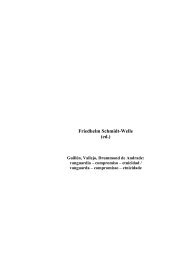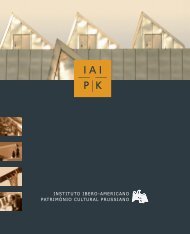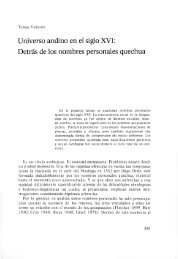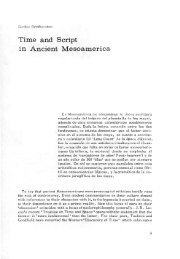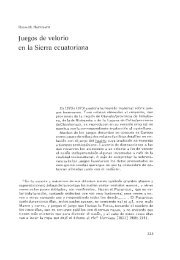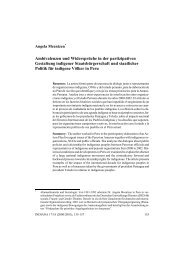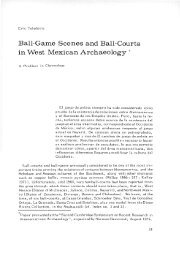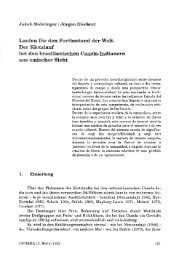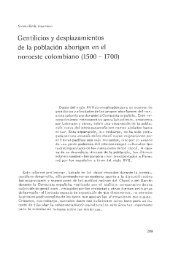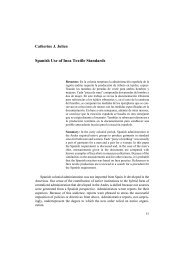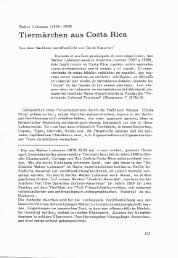o - Ibero-Amerikanisches Institut
o - Ibero-Amerikanisches Institut
o - Ibero-Amerikanisches Institut
Create successful ePaper yourself
Turn your PDF publications into a flip-book with our unique Google optimized e-Paper software.
MESOAMERICA<br />
Geographically, the solar-walk paradigm may be understood as part<br />
of a larger tradition of native American ritual and chronology whose<br />
coherence is especially marked in the northern half of the continent,<br />
extending from the Atlantic coast and the southeast, across the Plains<br />
to the southwest and Mexico (cf. Brotherston 1984).<br />
In Mexico and Mesoamerica, the walk is clearly mapped out in native<br />
script, hieroglyphic and iconographic, in the screenfold books of ritual.<br />
On the mappamundi pages of the Fejérváry and Laud screenfolds, for<br />
example, it may be traced through the cardinal stations of native astronomy<br />
in the tropics, the east and west horizons, with zenith and nadir<br />
each half way between; such is the case too with the Venus tables in the<br />
hieroglyphic Dresden screenfold. For this is the route followed by the<br />
culture-heroes of Mesoamerican cosmogonies implicit on those pages<br />
and written out alphabetically in such works as the Nahua "Cuauhtitlan<br />
Annals" and "Legend of the Suns", the Quiche-Maya "Popol Vuh", and<br />
the lowland Maya Books of Chilam Balam. True to the astronomical<br />
analogue, these travellers pass through the underworld (Mictlan, Xibalba),<br />
rise again at the eastern horizon, and reach the moment of plenitude in<br />
the heart of the sky (cf. Brotherston 1976).<br />
Quetzalcoatl, in the "Legend of the Suns", descends to Mictlan to<br />
acquire the bones from which to make woman and man; on his way back<br />
up east, this Venus-figure faces a strange hazard, one astoundingly reminiscent<br />
of that faced at the same astronomical position by the Morning star<br />
of the Blackfeet Algonkin: he is set upon and pecked at by birds (cf.<br />
Spence 1914: 199, 204). In the "Popol Vuh", whose underworld 'testtheme'<br />
has been fruitfully compared with that in the cosmogonies of the<br />
southwest (Mönnich 1969), the hero Twins descend to Xibalba to avenge<br />
their father who had been murdered there and got no further than this<br />
half-way station; they themselves pass through and like their Mide counterparts<br />
step up into the eastern sky, where they actually become sun<br />
and moon (Edmonson 1971: 144):<br />
22<br />
And thus they took their leave,<br />
Having completely conquered all of Hell (Xibalba)<br />
And then they walked back up<br />
Here amid the light.<br />
And at once<br />
They walked into the sky.<br />
And one is the sun,<br />
And the other of them is the moon.<br />
Then it grew light in the sky,<br />
And on the earth.<br />
They are still in the sky.



